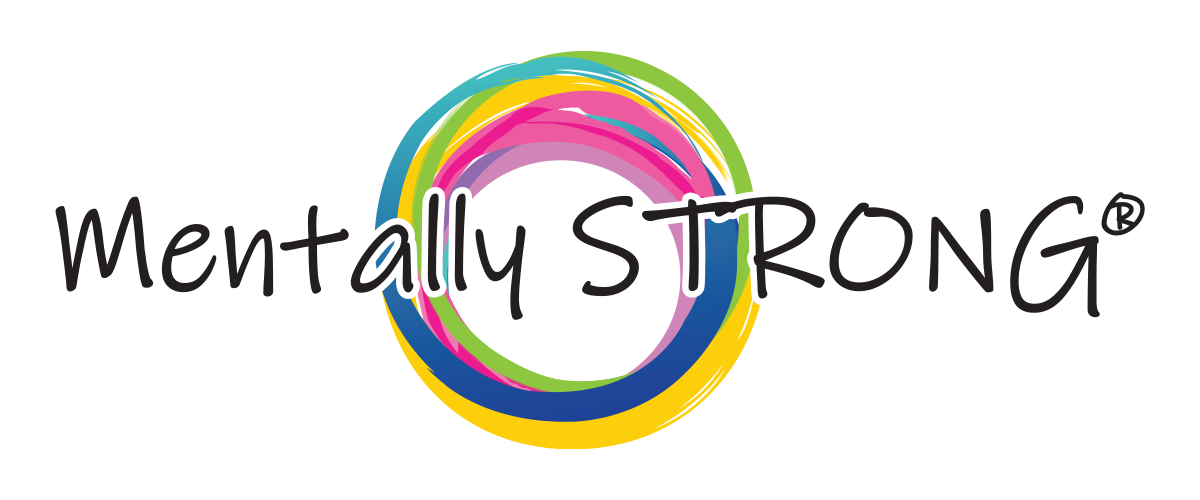Grief isn’t just sadness; it’s a powerful, full-body experience that reaches into every part of who you are. When you’ve lost someone deeply close to you, it’s like a part of you shifts, and nothing feels the same. Your emotions can range from overwhelming sorrow to moments of guilt, anger, or even relief—and it’s okay to feel them all. In my own grief journey, I’ve come to understand that it is simply not something you “get over”, it’s a journey that shapes us, and everyone’s path looks a little different.
Grief worksheets are one way to help guide you through this journey, step-by-step, giving you the space to acknowledge the many layers of what you’re feeling. Grief and loss worksheets offer a supportive way to pause and reflect, helping you make sense of these layered feelings. Each emotion, whether it’s frustration, numbness, or a desperate longing, is valid. Grief therapy worksheets provide a safe place to unpack each of these emotions without fear of judgment. Writing down what you’re feeling or even just circling words that resonate with you can be incredibly freeing. It allows you to see your emotions on paper, giving them form so they’re not just swirling inside. It’s through this practice that grief worksheets become a powerful tool to process pain and nurture healing.
What Are Grief Worksheets and How Can They Help You?
Grief is heavy, and grieving can feel incredibly lonely. Even when surrounded by family or friends, the depth of loss can make it seem as if no one else truly understands what you’re going through. Finding support, whether from others or from tools like grief and loss worksheets, can make all the difference. These grief and loss worksheets aren’t just exercises; they’re companions on your path, offering a quiet, supportive space where you can be honest with yourself. Sometimes, grief exercises can help you express what you might not feel comfortable saying out loud. They remind you that while grief is deeply personal, you don’t have to bear it alone.
A Guide for Navigating Your Emotions
Grief brings with it a whirlwind of emotions—some you may have expected, and others that take you by surprise. These grief worksheets are here to walk alongside you, guiding you gently to name and understand what’s swirling within. By taking the time to put your feelings into words, you begin to notice patterns, uncovering where the ache is strongest and, sometimes, where small moments of peace may surface. These tools offer you a safe space to face feelings like sadness, anger, and guilt with compassion, helping you stay grounded even in the midst of the storm.
Turning Reflection Into Healing
Acknowledging the depth of your grief is a powerful step toward healing, and these worksheets help turn that reflection into growth. Grief therapy worksheets provide a way to explore these emotions with depth, guiding you gently toward acceptance. Writing memories, exploring emotions, or recognizing your own resilience, each exercise opens the door to healing in a way that feels manageable.
How Grief Worksheets Support You in Different Phases of Grief

Grief isn’t a process with an endpoint, and it isn’t something we simply “get over.” Instead, it’s an experience we learn to live with over time. The journey often feels cyclical—waves of sadness, frustration, and even moments of acceptance can flow together or resurface unexpectedly. These grief worksheets meet you wherever you are in that journey, whether you’re in the early stages of overwhelming sadness or working through anger, loneliness, or doubt. Grief therapy worksheets are a safe and nonjudgmental way to revisit the waves of loss that continue to resurface. They offer gentle prompts, not to rush you forward, but to encourage honest reflection and self-compassion at every step, helping you navigate the loss and find comfort.
Controlled Grief and Acknowledging the Pain
One of the foundational steps in grieving is simply acknowledging the pain. This can be a heavy step because it requires you to face the full reality of your loss. The Controlled Grief and Acknowledging Grief worksheets allow you to approach this first step with patience, giving you space to honor both the relationship you shared and the depth of the ache it leaves behind. The Controlled Grief worksheet helps you gently process the reality of your loss, honoring the relationship you shared. It’s an act of courage to name and hold that pain, recognizing it as part of your story. By taking time with these exercises, you’re letting yourself move slowly through the beginning stages of grief without judgment, honoring the love that still lives within you.
Working Through Anger and Guilt
Do you ever feel that anger rise up, that sense of betrayal, as though the world let you down? These feelings of anger and guilt are a natural part of your grief journey, and Getting Through Anger in Grief worksheets guide you through recognizing these feelings, helping you give them space to breathe without judgment. These exercises are there to remind you that feeling anger or guilt doesn’t make you a bad person; they’re valid, natural emotions in the healing process. These grief exercises allow you to develop coping skills for grief, safely release feelings and create space for a more compassionate perspective.
Creating Personal Grief Rituals
Finding personal rituals can help you feel connected to your loved one in a way that brings comfort and meaning to your journey. The Your Grief Ritual worksheet encourages you to explore rituals that feel healing and authentic, whether that’s lighting a candle, creating a memory space, or simply setting aside a few moments each day to reflect. The Cherish Grief worksheet can further support you in this process, encouraging you to create moments of peace and closeness as you honor the love that endures beyond the loss. These rituals don’t remove the pain, but they do offer moments of comfort and connection, reminding you of the beauty that still exists in the memories and love you hold. Grief exercises can also guide you in honoring your journey and finding moments of comfort.
Mapping Cumulative Grief and the Emotional Teapot Theory

Loss is often complicated by layers of past grief or trauma, and the pain of one loss can amplify older wounds. With the Mapping Cumulative Grief worksheet, you’re encouraged to explore the ways that different losses have shaped your life and experience. Paired with the Emotional Teapot Theory worksheet, these exercises help you understand how grief accumulates, sometimes spilling over unexpectedly. This process isn’t about reliving the pain but about acknowledging the role each loss plays in your life, giving you a better understanding of the emotional weight you carry and helping you manage it with care. The Emotional Teapot Theory grief worksheet, in essence, helps you better understand the weight each loss contributes to your overall grief.
Untangling Complex Emotions with the Mentally Strong Method
In grief, emotions can often feel tangled together—anger, sadness, guilt, and even moments of gratitude may arise all at once. The Untangle Your Thoughts and Dialectical Thinking worksheets introduce tools to help you separate, understand, and manage these complex emotions. Through reflective prompts, you’re encouraged to explore the logic vs. emotion of your feelings and learn how to approach grief with a balanced perspective. Grief coping skills are central to this approach, guiding you in building resilience and finding balance through difficult emotions. The Mentally Strong Method further supports this journey, offering structure and guidance as you navigate difficult feelings, helping you build resilience and self-understanding.
Finding Meaning and Growth Through Grief
As grief evolves, you may notice subtle changes—moments of peace, insights, or a desire to reconnect with others. The Growing Around Grief and Meaningful Relationship Statement worksheets support you in exploring these shifts, encouraging you to consider how your loved one’s legacy and memory can inspire meaning and personal growth. By reflecting on their impact in your life, these exercises help you see how you can carry their presence forward, not as a burden but as a source of strength and love that endures.
Developing Self-Care and Self-Regulation Habits in Grief
Grieving is exhausting, physically and emotionally, and self-care can easily feel like an afterthought. The Self-Care and Self-Regulate worksheets focus on creating habits that support your well-being, helping you stay grounded even in times of emotional turbulence. Simple routines, like mindful breathing, gentle movement, or time spent in nature, can be deeply healing. Practicing coping skills for grief, like mindful breathing, helps you stay grounded through difficult moments. These worksheets remind you that self-care isn’t about “moving on” from your grief—it’s about finding small ways to take care of yourself in the midst of it.
Each of these worksheets in the course is designed to gently guide you through these phases with compassion and support, allowing you to feel what you need to feel, heal as you’re ready, and honor the journey in a way that’s true to you. If these concepts resonate with you, consider exploring the free grief course where you can access these resources and let them support you on your own path of healing.
Get Access to the Full Grief Worksheets Collection: Enroll in Our Free Course
Thank you for taking this step in exploring your grief journey. I understand how hard it can feel to sit with these emotions, but I also know the courage it takes to try. This course and these worksheets are here to offer you a gentle guide, a steady way to explore the layers of grief without rushing or forcing any part of it. Think of this course as a gentle form of therapy for grief, with worksheets that guide you through loss and healing at your own pace.
What You’ll Learn in the Course

In this course, I’ve pulled together the essential tools and insights I discovered on my own journey through grief. You’ll find guidance on managing the intense emotions that come with loss, creating space for those feelings, and practical steps toward healing. The goal here isn’t to ‘move on’ but to support you in finding ways to carry your grief meaningfully. You’ll learn ways to honor your loved one while allowing yourself to grow and heal in your unique way.
A Glimpse Into the Worksheets You’ll Receive
These worksheets are designed to meet you wherever you are in your grief journey. Some days, you might find solace in simple reflection exercises; other times, you may need guidance to process feelings like anger, regret, or loneliness. I’ve included structured activities that help you dive deeper into your thoughts and emotions, allowing you to get to the core of your pain. Think of these worksheets as a gentle roadmap, helping you stay connected to yourself and your healing.
Join Others on the Path to Healing
Grief can feel isolating, but you don’t have to do this alone, and you can find purpose through the pain. This course brings together others who are navigating similar pain and searching for ways to make sense of their loss. Through shared experiences and insights, you’ll find a supportive community that values compassion and understanding. Healing in the presence of others can be a powerful experience, and this journey becomes one where we grow stronger, together.
Take the First Step in Healing
You’ve already taken that first courageous step toward finding a way to carry your grief. Grieving is hard, and there’s no need to face it alone. This free grief course offers a supportive space, practical worksheets, and resources that meet you exactly where you are in your journey—whether you’re seeking a quiet space to reflect or practical tools to help you understand and process your feelings.
This free course is designed to offer guidance and gentle support each step of the way, day by day, as you build a path that respects both your pain and your resilience. Wherever you are in this process, know that you don’t have to do this alone; we’re here to walk beside you, honoring your strength and your story.

